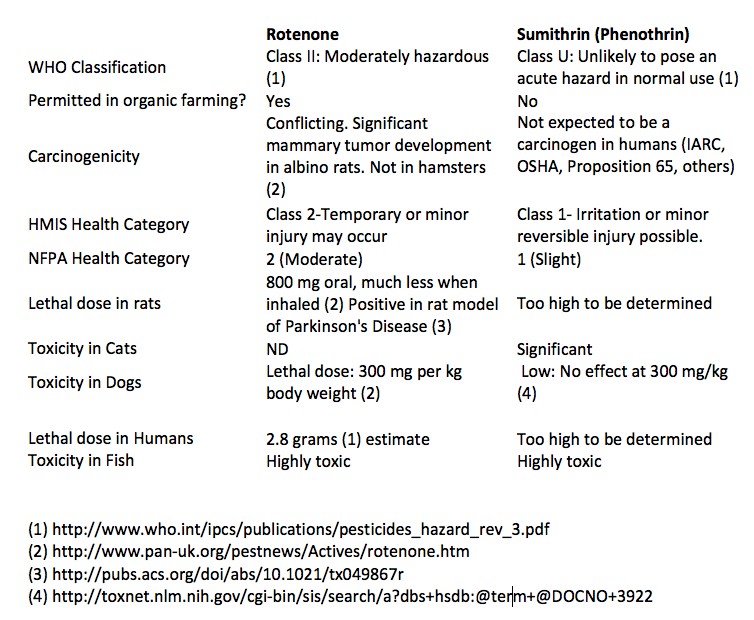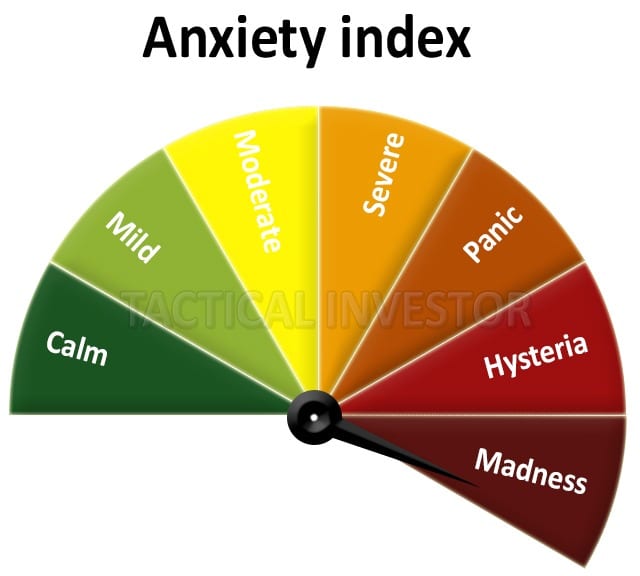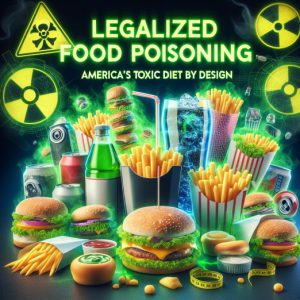
Toxins in Organic Food: Uncovering the Simple Truth
Updated Sept 29, 2023
The masses are notorious for latching onto false perceptions and believing the food industry or the government has their best interests at heart. They only smell the coffee, or it could be too late when things go amiss. For example, the public automatically assumes organic is the healthy option when consuming foods and finished products such as yoghurt, butter, etc. For example, carrageenan is used in organic yoghurt, almond milk, cream, and other organic products but is a terrible ingredient.
The Perception of Organic Food: A Closer Look
Organic food has gained significant popularity over the past few years, with many consumers associating it with health and sustainability. The perception that organic food is inherently healthier stems from the belief that it is free from synthetic pesticides and genetically modified organisms. However, it’s essential to understand that organic does not necessarily mean toxin-free.
Carrageenan: A Controversial Ingredient
Carrageenan, derived from red seaweed, is a widely used additive in various organic food products. While it is a thickening and stabilizing agent, carrageenan has been subject to controversy and health concerns. This article explores the potential risks associated with carrageenan consumption, highlighting the differentiation between degraded and food-grade carrageenan.
Carrageenan is a naturally occurring polysaccharide extracted from specific species of red seaweed. It has been used for centuries in food preparation due to its gelling and thickening properties. In the food industry, carrageenan is commonly used to improve texture, stability, and shelf life in various products, including dairy alternatives, desserts, and processed meats.
Controversy and Health Concerns:
Inflammation and Gut Irritation:
The potential link between carrageenan and inflammation and gut irritation has been a subject of scientific scrutiny. Several studies have investigated the effects of carrageenan on animals, mainly focusing on degraded carrageenan, which is a different form from the food-grade carrageenan used in food products.
Degraded carrageenan, or poligeenan, is produced through harsh processing methods involving high temperatures and acid treatment. This form of carrageenan has been found to possess different properties and potentially harmful effects, including the ability to induce inflammation and gut irritation. Animal studies using high doses of degraded carrageenan have shown evidence of intestinal damage and inflammatory responses.
However, it is crucial to distinguish degraded carrageenan from food-grade carrageenan, which undergoes a different manufacturing process and is approved for use in food products. Food-grade carrageenan is derived from specific seaweed species and is processed under controlled conditions to ensure its safety and functionality.
Extensive safety evaluations have been conducted on food-grade carrageenan. Regulatory agencies, such as the U.S. Food and Drug Administration (FDA), have determined that food-grade carrageenan is safe for consumption in the quantities typically found in food products. These evaluations consider the specific characteristics, composition, and intended use of food-grade carrageenan, assuring its safety when used as an additive.
It is important to note that the studies highlighting the potentially harmful effects of carrageenan often involve degraded carrageenan at high concentrations that exceed typical dietary exposure to food-grade carrageenan. Therefore, the evidence linking inflammation and gut irritation to carrageenan must be interpreted cautiously, considering the specific form of carrageenan studied and the dosage used.
While some individuals may report experiencing gastrointestinal symptoms after consuming carrageenan products, it is crucial to consider other factors that could contribute to these effects, such as individual sensitivities or underlying health conditions. As with any food ingredient, individuals with specific concerns or sensitivities should consult with healthcare professionals for personalized advice.
Potential Cancer Risk
The potential association between carrageenan and cancer has been debated and investigated. Some claims have suggested a link between carrageenan consumption and cancer development. However, examining the available evidence and considering the context in which these claims arise is important.
Studies indicating a carcinogenic effect of carrageenan have predominantly utilized high doses of degraded carrageenan, which is not representative of the concentrations typically present in food-grade carrageenan used in food products. Degraded carrageenan undergoes more severe processing methods and differs in structure from food-grade carrageenan, leading to differences in its biological effects. Therefore, the findings from studies involving degraded carrageenan cannot be directly extrapolated to food-grade carrageenan.
Regulatory agencies, including the U.S. Food and Drug Administration (FDA), have extensively evaluated the safety of food-grade carrageenan. Based on these evaluations, food-grade carrageenan has been deemed safe for consumption in the quantities commonly found in food products. The FDA’s determination of the safety of carrageenan considers the available scientific evidence, including studies conducted explicitly with food-grade carrageenan.
It is important to note that assessing potential cancer risks involves considering various factors, such as the dosage, duration of exposure, and overall dietary context. The concentrations of carrageenan typically used in food products are significantly lower than the doses used in studies, suggesting a carcinogenic effect. Therefore, the evidence linking carrageenan to cancer in typical dietary exposure is currently considered inconclusive.
It is worth emphasizing that regulatory agencies continue to monitor emerging research and reassess the safety of food ingredients, including carrageenan, as new information becomes available. Should any compelling evidence arise suggesting a significant cancer risk associated with carrageenan consumption at typical dietary levels, regulatory agencies would take appropriate action to protect public health.
In conclusion, while claims have been made regarding a potential link between carrageenan and cancer, the evidence is currently inconclusive. Studies demonstrating a carcinogenic effect have primarily used high doses of degraded carrageenan, which does not reflect the concentrations found in food-grade carrageenan. Regulatory agencies, such as the FDA, have determined that food-grade carrageenan is safe for consumption within the typical dietary exposure. Ongoing research and regulatory scrutiny remain essential to ensure the continued safety of food ingredients like carrageenan.
FDA’s Trustworthiness in Question: Carrageenan Controversy and Recalled Drugs
Carrageenan, a commonly used additive derived from red seaweed, has stirred significant controversy due to mounting evidence of potential health risks. Numerous studies have indicated that degraded carrageenan can induce inflammation, gut irritation, and even cancer in animals. Even more alarming is that this isn’t an isolated incident; it sheds light on a broader issue. The Food and Drug Administration (FDA), responsible for approving various products for public consumption, has not been immune to consenting substances that later pose significant health risks.
In the pharmaceutical realm, countless drugs have been granted FDA approval, only to be recalled after causing severe harm or even fatalities. These cases serve as stark reminders that the FDA’s clearance doesn’t always guarantee the safety and well-being of consumers.
As for carrageenan, while food-grade carrageenan has undergone safety assessments and has been approved for use in food products, the concerns surrounding its potential health effects continue to raise questions about the thoroughness of regulatory evaluations.
Considering these facts and exercising caution when consuming products containing carrageenan or any FDA-approved substances is prudent. Individual sensitivities and specific health conditions can significantly influence how these additives affect us, making it advisable to consult a healthcare professional if you have concerns about their impact on your well-being. Your health should always be your top priority.
Recalled Drugs: Failures in the FDA Approval Process
The U.S. Food and Drug Administration (FDA) protects pharmaceutical safety and efficacy. However, within this crucial oversight, there have been unsettling incidents where the FDA’s approval processes have failed, resulting in the release of drugs later recalled. This essay explores the untold stories of these recalls, uncovering the repercussions of a less-than-foolproof approach.
Section 1: Vioxx (Rofecoxib) – A Deadly Painkiller
– Approval and Fallout: The FDA’s nod to Vioxx in 1999 for pain and inflammation treatment and the shocking revelation of its association with heart attacks and strokes leading to tens of thousands of premature deaths.
– FDA’s Oversight Scrutinized: The critique that the FDA’s approval process inadequately assessed the drug’s cardiovascular risks.
Section 2: Fen-Phen (Fenfluramine/Phentermine) – The Weight-Loss Nightmare
– A Risky Regimen: The FDA approved Fen-Phen for weight loss in the 1990s and its subsequent connection to life-threatening heart and lung complications.
– Incomplete Safety Data: The FDA criticized oversight and its controversial approval despite incomplete safety information, leading to the drug’s 1997 recall.
Section 3: Rezulin (Troglitazone) – A Diabetic Disaster
– FDA’s Blessing and Liver Woes: Rezulin’s FDA approval in 1997 and the revelation of its severe liver toxicity ultimately prompted its 2000 withdrawal.
– Inadequate Risk Assessment: Criticisms regarding the FDA’s approval process, particularly its failure to thoroughly evaluate potential liver health risks to patients.
Section 4: Avandia (Rosiglitazone) – The Controversial Antidiabetic
– FDA’s Early Approval and Ongoing Controversy: Avandia’s FDA approval in 1999 and the subsequent findings of increased cardiovascular risks among patients.
– FDA’s Handling Critique: Criticisms of the FDA’s initial approval and its management of safety concerns, which led to severe usage restrictions and plummeting sales.
The FDA’s pharmaceutical approval process is the frontline of public health protection. However, recalling drugs like Vioxx, Fen-Phen, Rezulin, and the Avandia controversy exposes potential flaws within this system. These stories emphasize the importance of rigorous, transparent, and comprehensive evaluations to shield the public from potentially dangerous medications, underscoring the imperative need for change within the FDA’s approval procedures.
Additional Health Concerns Associated with Carrageenan Consumption
While most scientific evidence supports the safety of food-grade carrageenan, some studies and anecdotal reports have suggested potential health concerns associated with its consumption. It’s important to note that these concerns are not widely supported by scientific consensus and further research is needed to establish any definitive causal relationships. Nevertheless, here are a few potential health concerns that have been raised:
1. Digestive Issues:
Some individuals have reported gastrointestinal symptoms such as bloating, gas, and diarrhoea after consuming carrageenan products. While these reports exist, it is challenging to attribute these symptoms solely to carrageenan, as other factors, such as individual sensitivities or pre-existing digestive conditions, may contribute to these effects. Limited evidence suggests that certain individuals with inflammatory bowel disease or irritable bowel syndrome may be more susceptible to carrageenan-induced digestive issues.
2. Allergic Reactions:
Although rare, allergic reactions to carrageenan have been reported. These reactions can manifest as skin rashes, itching, swelling, or respiratory symptoms such as wheezing or difficulty breathing. If an individual has a known allergy to red seaweed or a history of allergic reactions to carrageenan, it is advisable to avoid products containing carrageenan.
3. Hypersensitivity:
Some individuals may exhibit hypersensitivity or intolerance to carrageenan. Symptoms may include headache, fatigue, joint pain, or brain fog. However, the exact mechanisms and prevalence of carrageenan hypersensitivity are not well understood and require further investigation.
4. Potential Interaction with Medications:
There is limited research suggesting that carrageenan may interact with certain medications. For example, carrageenan has been reported to interfere with the effectiveness of some anticancer drugs in preclinical studies. However, more research is needed to determine the clinical significance and the extent of such interactions.
It’s important to highlight that carrageenan’s safety and potential health concerns are areas of ongoing research and discussion. Regulatory agencies, such as the FDA, continue to evaluate new findings and reassess the safety of carrageenan as further information becomes available.
Individuals with specific health conditions, allergies, or concerns should consult healthcare professionals for personalized advice. Additionally, reading product labels and being aware of carrageenan content can help individuals make informed dietary choices.
Regulatory Oversight and Consumer Awareness
Regulatory oversight and consumer awareness play vital roles in shaping ingredients like carrageenan in food products. Here’s a closer look at each aspect:
1. Regulatory Oversight:
Regulatory agencies, such as the U.S. Food and Drug Administration (FDA) and the U.S. Department of Agriculture (USDA), establish guidelines and standards for food ingredients, including carrageenan. These agencies evaluate the safety of components based on scientific evidence and conduct regular assessments to ensure ongoing protection.
However, regulating specific ingredients can be complex, with differing viewpoints among regulatory agencies and certifying bodies. For instance, while the USDA allows the use of carrageenan in organic products, some organic certifying agencies have raised concerns and called for its removal. This highlights the need for ongoing evaluation and harmonization of standards to ensure consistent regulatory oversight.
2. Consumer Awareness:
Consumer awareness and demand for transparency can significantly impact the food industry. As consumers become more informed about ingredients and potential health concerns, they can make choices that align with their preferences and values. Consumers can drive change in the food industry by reading product labels, researching ingredients, and supporting brands that prioritize transparency and safety.
Increased consumer awareness also encourages manufacturers to be more responsive to consumer demands. As consumers voice concerns or seek alternatives to certain ingredients, manufacturers may respond by reformulating products or exploring safer options. This consumer-driven demand can influence industry practices and improve ingredient choices over time.
The Bigger Picture: Organic vs. Conventional Food
While potentially harmful additives like carrageenan in organic food are concerning, it’s essential to consider the bigger picture. Organic farming practices are generally more sustainable and environmentally friendly than conventional farming. They promote biodiversity, reduce environmental pollution, and contribute to soil health.
Moreover, organic food often has lower pesticide residue levels than conventional food. While organic food can contain natural toxins, the same applies to conventionally grown food. The key is maintaining a balanced and varied diet and staying informed about our food.
While organic food has many benefits, it’s not immune to potential health risks. The controversy surrounding carrageenan underscores the need for greater food industry transparency and consumer education. As consumers, we must stay informed about our food choices and demand better from the food industry. After all, our health and well-being are at stake.
Here’s a closer look at the key factors:
1. Sustainable and Environmental Benefits:
Organic farming practices prioritize using natural fertilizers and avoid synthetic pesticides and genetically modified organisms (GMOs). This approach promotes soil health biodiversity and reduces the impact on ecosystems. Organic farming aims to preserve natural resources and minimize environmental pollution by focusing on sustainable practices.
2. Reduced Pesticide Residues:
Organic food often has lower pesticide residue levels than conventionally grown food. Organic farming relies on methods such as crop rotation, biological pest control, and organic-approved pesticides when necessary. However, it’s important to note that organic farming allows for the use of certain naturally derived pesticides, and organic produce can still contain trace amounts of pesticides.
3. Natural Toxins:
Both organic and conventional foods can contain natural toxins, as various plants naturally produce compounds that may pose health risks in high concentrations. However, regulations and safety standards are in place to ensure that the levels of these natural toxins in food are within safe limits. Maintaining a balanced and varied diet is crucial in minimizing the potential impact of natural toxins.
4. Transparency and Consumer Education:
The controversy surrounding additives like carrageenan in organic food underscores the need for transparency and consumer education. Consumers should stay informed about the ingredients in their food, read labels, and understand the potential health risks associated with certain additives. By demanding transparency and seeking information, consumers can make more informed choices and drive improvements in the food industry.
Organic farming practices offer environmental benefits and can contribute to reduced pesticide residues in food. However, it’s essential to recognize that organic food is not entirely risk-free, and natural toxins can be present in both organic and conventional food. We can work towards a healthier and more sustainable food system by promoting transparency, consumer education, and holding the food industry accountable.
Exploring Toxins in Organic Food: The Unveiled Truth
The organic food industry has seen exponential growth over the years, with consumers increasingly opting for what they perceive as healthier and more environmentally friendly choices. FOR INSTANCE, the UK’s organic baby food market now holds a staggering 70% share. However, the assumption that organic food is inherently safer and superior warrants a more nuanced discussion.
One common misconception is that organic food is free from pesticides. In reality, organic farming does use pesticides, but they are derived from natural sources rather than synthesized chemically. However, honesty does not automatically equate to being safe or less toxic. Some natural pesticides can harm humans and the environment, and their use in organic farming underscores the need for more research and regulation in this area.
The Risk of Mold and Bacteria
Organic farming practices, while gentler and more sustainable, can sometimes lead to unintended consequences. For instance, the reduced use of synthetic pesticides and fertilizers can increase the risk of mould and bacterial contamination. Certain types of mould produce mycotoxins, which can harm humans and animals. Similarly, bacterial contamination can pose serious health risks, particularly in raw and minimally processed foods.
The Complexity of Organic Certification
The organic certification process also adds to the complexity. Different countries have different standards and regulations for organic farming, leading to inconsistencies in what is labelled as organic. Moreover, the certification process primarily focuses on farming practices rather than the final product’s safety or nutritional value. This means that an organic label does not guarantee that the product is nutritionally superior or free from harmful substances.
Despite these concerns, it’s important to remember that organic farming has several benefits. It promotes biodiversity, reduces environmental pollution, and often results in products with fewer pesticide residues. However, these benefits must be balanced against potential risks, such as natural toxin exposure and bacterial contamination.
The organic food debate is far from black and white. While organic products offer certain benefits, they are not immune to potential risks. As consumers, it’s crucial to make informed choices about our food. This involves understanding what organic labels mean, being aware of potential risks, and balancing our diet with various foods. Pursuing a healthier, more sustainable food system requires ongoing research, robust regulation, and consumer education.
Toxins in Organic Food: The Use of Raw Manure as Fertilizer
Manure is a rich source of E.coli, shigella and salmonella. Once in the soil, these pathogens can transfer to plants or even contaminate the water system used to wash the produce and irrigate the land. These pathogens can quickly kill the elderly or young kids and cause many other problems if they don’t kill you.
Diez-Gonzalez, an assistant professor in the food science and nutrition dept of the University College of Agriculture, stated the following.
“The media have portrayed that organic vegetables have a lot of foodborne pathogens. Our data doesn’t support that,” he told CIDRAP News. “But it does seem to confirm the belief that it [organic produce] is more susceptible to fecal contamination. The good news is that if you are certified, your chance of fecal contamination decreases significantly.”
E. coli was found in almost 10% of the organic produce samples they examined versus in 1.6% of that found in regular produce, indicating that organic food might contain surprises you did not bargain for.
Look at the chart below to see why organic food is not as perfect as many would have you believe. For one, they are grown with pesticides and fungicides. Otherwise, most crops would be eaten before they made it to the store.

Source: www.acsh.org
So the moral of the story is to check everything before you buy it, and then make sure you wash your products thoroughly so that they don’t have anything you would not think twice about putting into your body.
Article of the month
This hysteria-based sell-off is producing one of the most significant buying opportunities in decades; more on that later.

In the short term, technical analysis cannot identify support levels because we are dealing with madness, which is why we added the new standard to the anxiety index. What exacerbates the situation is that there is very little liquidity. Look at the bid and ask price on some unreal options, for example, an offer of 1.40 and an ask of 5.00. This allows a few big players to move the markets in whatever direction. Mass Media Examples of Stupidity
Other suggestions
Subscribe to our free newsletter to keep abreast of the latest developments; we cover everything from the financial markets to the World’s food supplies. Live one to two levels below your means and put this money to work in the stock market. One thing to remember is that disaster is the code word for opportunity.
Originally published on October 12, 2016, this content has been periodically updated, with the most recent update completed in August 2023.
Articles for Nurturing Intellect and Soul

How To Get Financial Freedom: Escape the Herd for Lasting Success

Legalized Food Poisoning: America’s Toxic Diet by Design

“””Investing for dummies”””: Follow The Trend

Executive Compensation Driving Share Buybacks

Illusions of Economic Recovery: Negative Interest Rate Controversy

Mastering the Trading Range: Unlocking the Potential for Explosive Gains

The Golden Symphony: Unveiling the Dynamics of the Gold to Silver Ratio

Inside the Market Psychology Cycle: Unveiling Trends and Tactics

South China Sea Showdown: Intensifying Heat on the Horizon

Will the Stock Market Crash: Analyzing Possibilities and Implications

China Quantitative Easing: Battling Economic Slowdown

What is Data Manipulation: The Dark Side?

Corruption in China: Government’s Aggressive Crackdown on Wrongdoings

These Are The Things That Scare Americans The Most

Exotic Art: The Fusion of Art and AI Brilliance
Mass Psychology states Trump win Equals stock market buying opportunity (Sept 29)
Forget Main Stream Media Unless You Love Losing (Sept 6)


